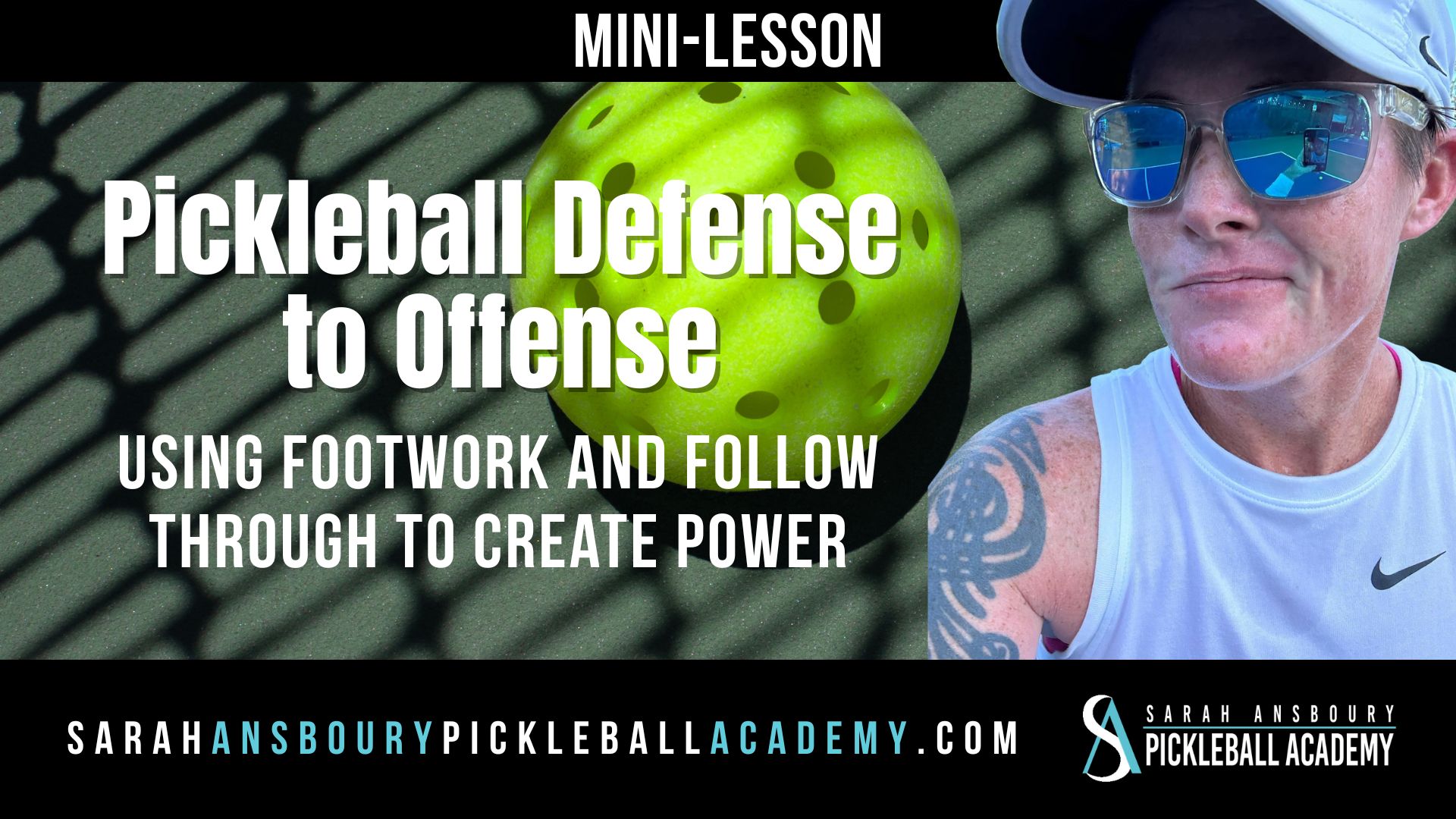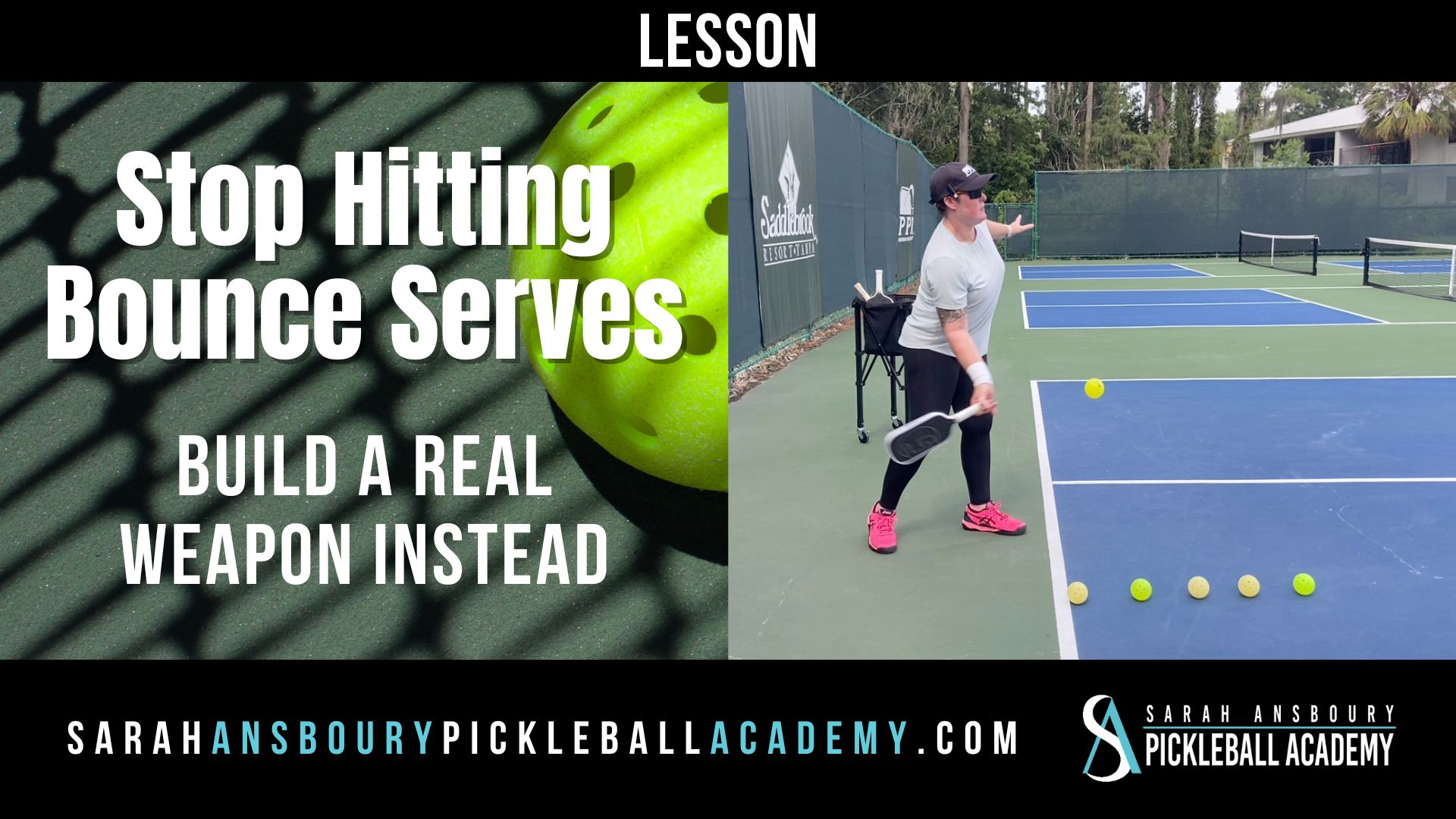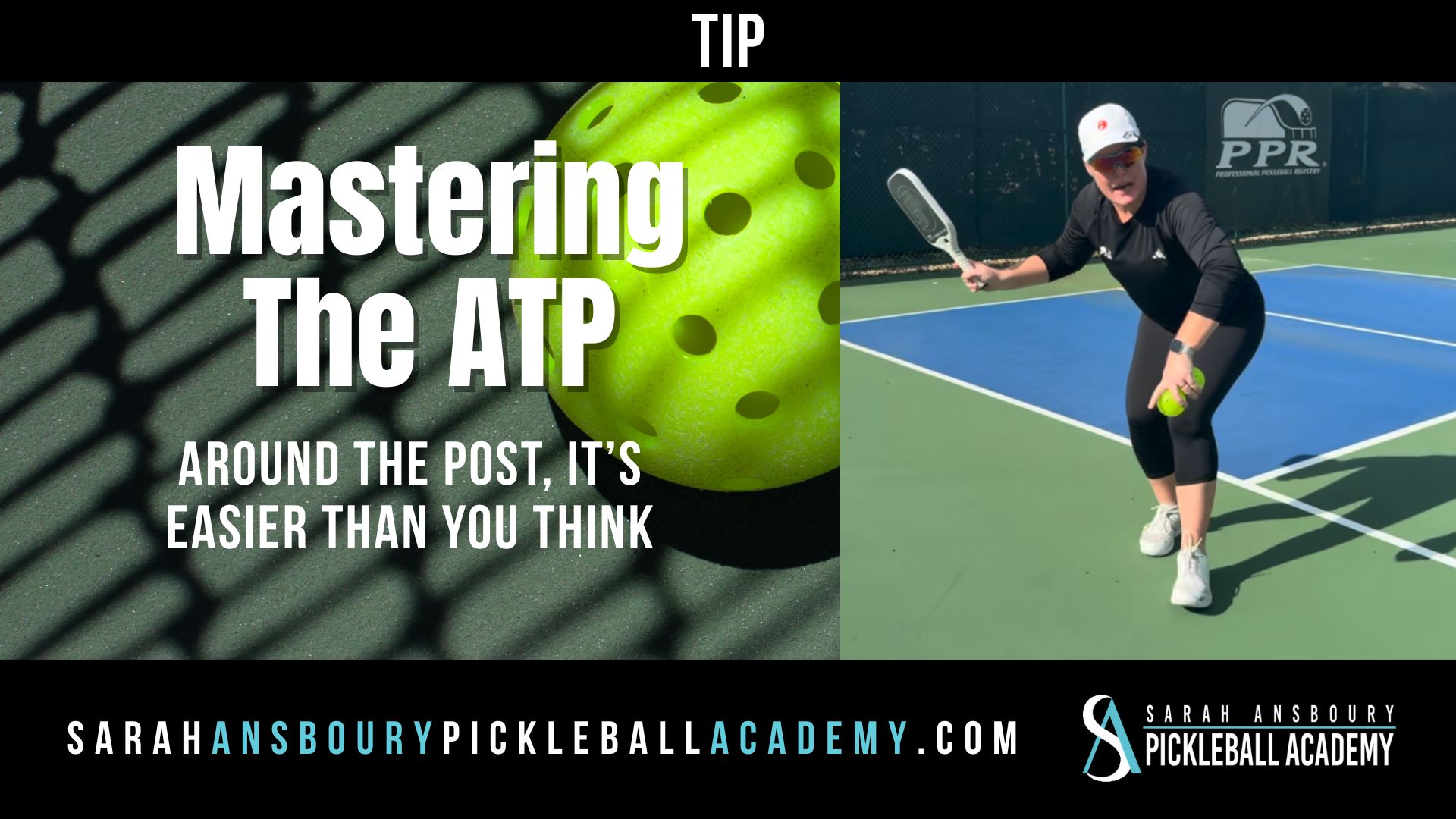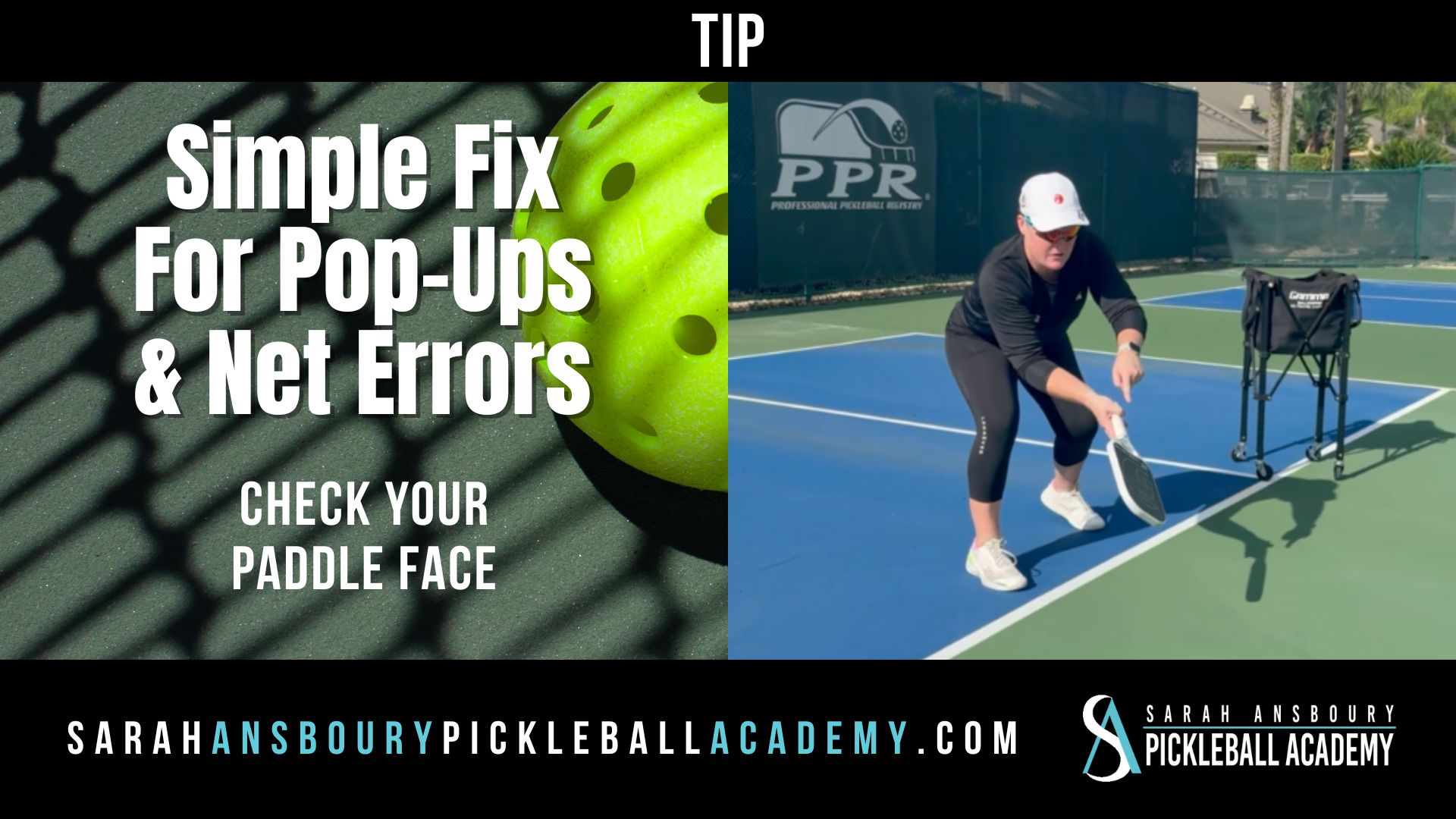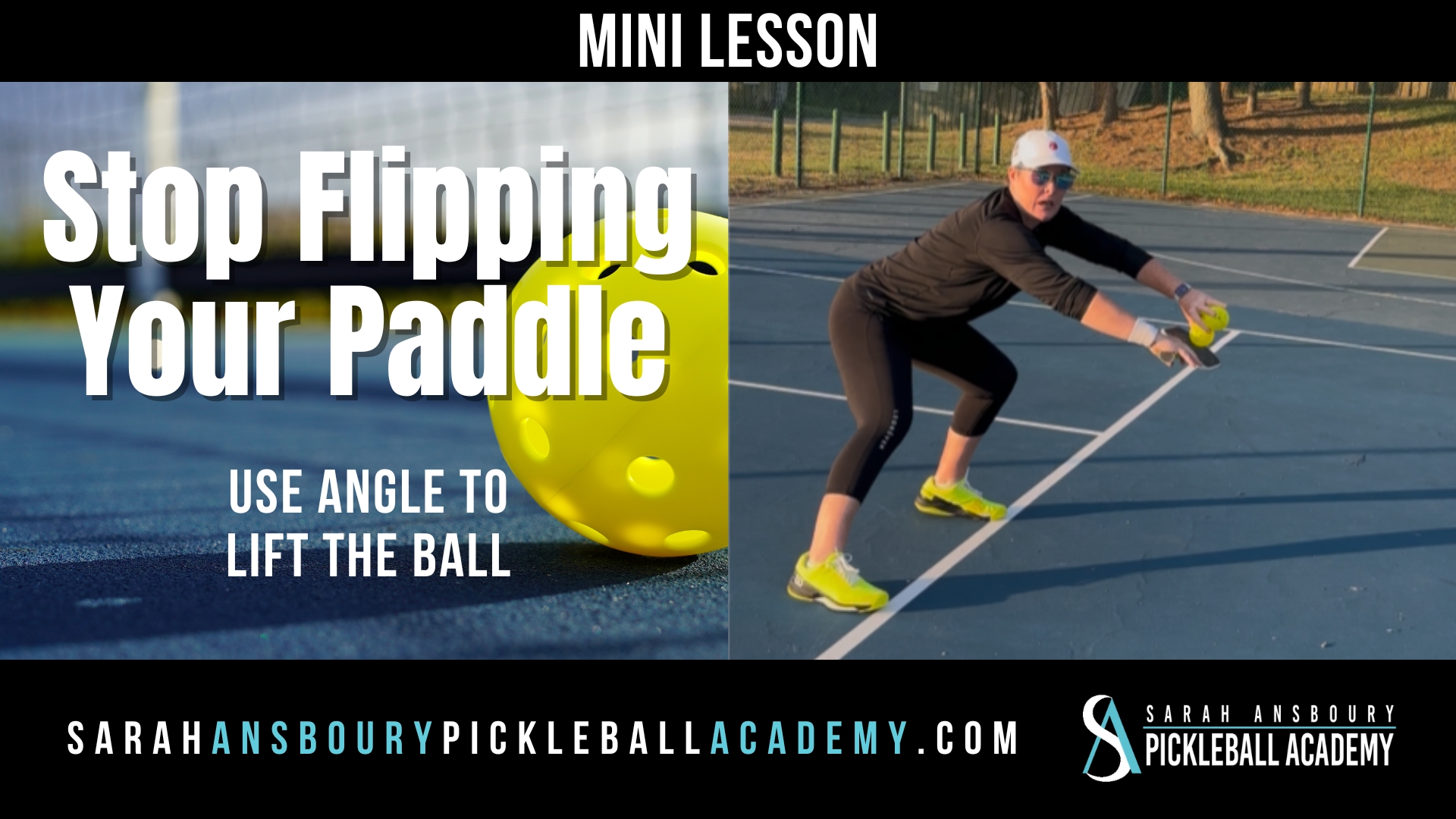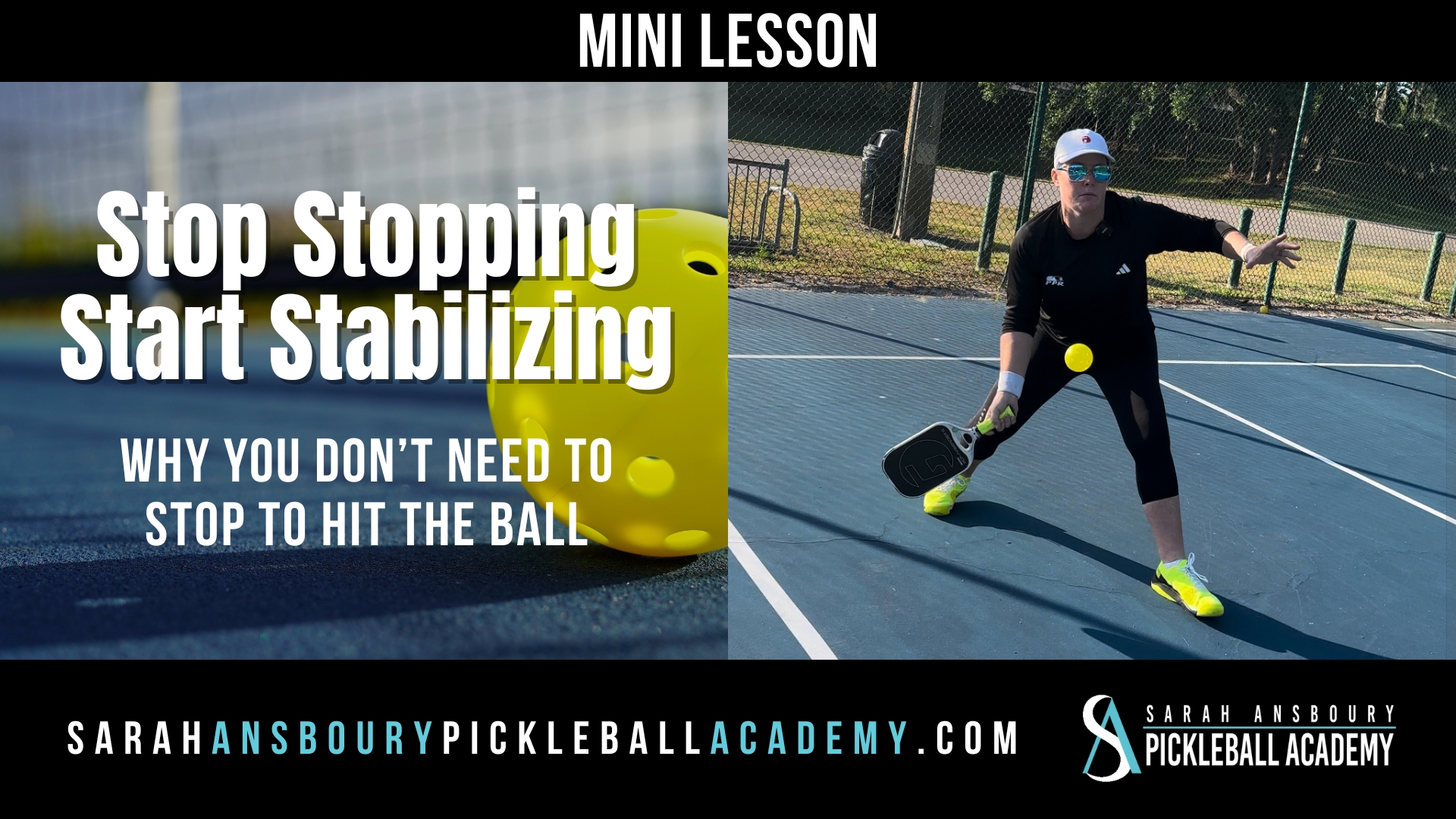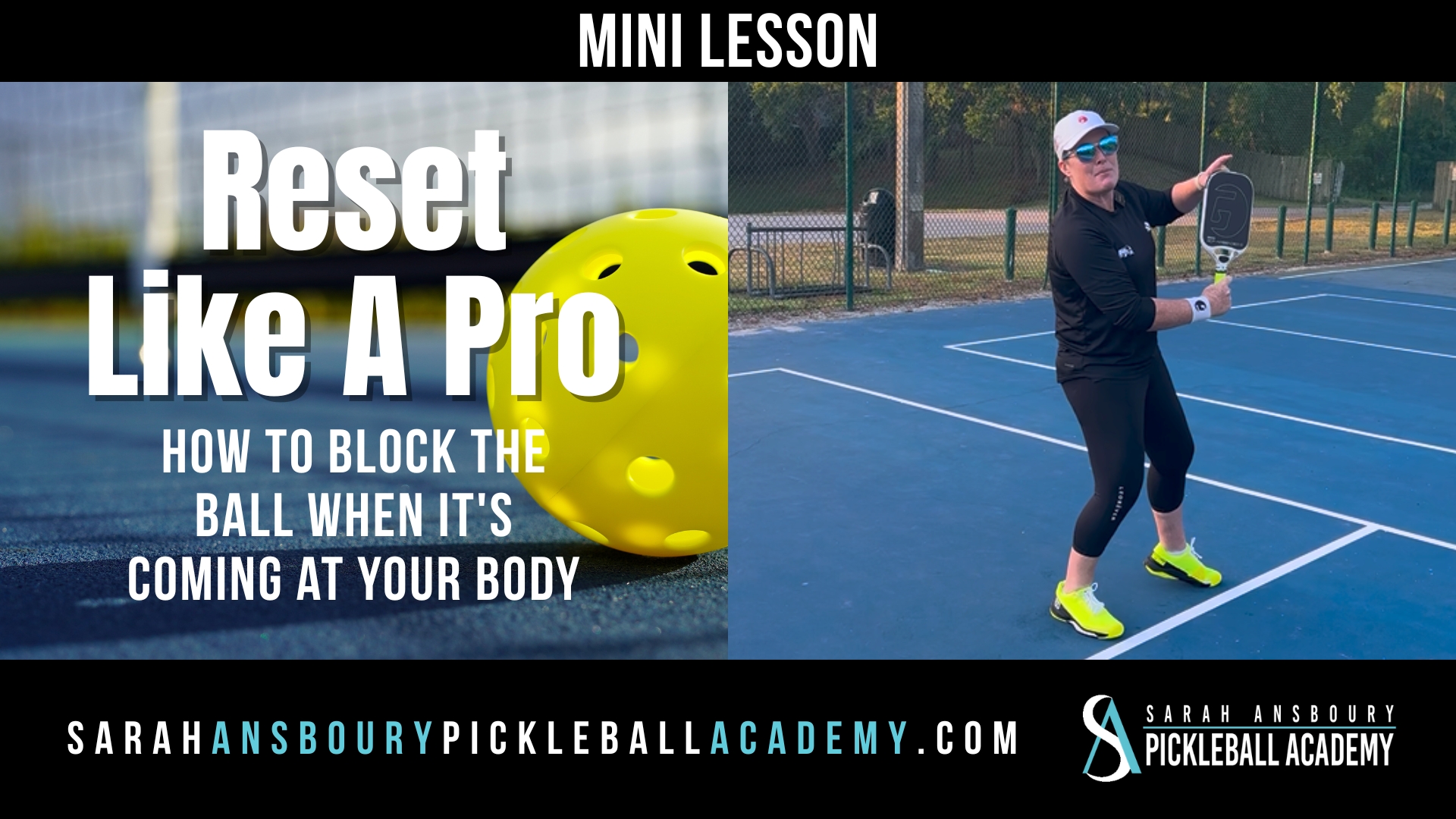When players first start playing pickleball, they tend to avoid hitting volleys. I often see a new player stepping back, away from the non-volley zone line, allowing the ball to bounce before hitting it. As I have discussed in another post, you want to capture and hold the line. So today, we will review a few keys to hitting solid pickleball volleys.

When Should I Volley
I want you to hit a volley when you have the opportunity. I am not just suggesting you do this at the non-volley zone. Hitting a volley, rather than a ground stroke, can be very effective when you at mid-court as well:
- First, it takes time away from your opponent and as we discussed in a prior post, time is your friend in pickleball.
- Second, you eliminate the possibility of getting a bad bounce caused by inconsistency in the court or spin imparted by your opponent.
- Finally, it is a more offensive shot. So if you are on offense, go ahead and hit a volley.
Keys to an Effective/Solid Volley
A volley is hit when the ball is above your waist, or above the net. There are three keys to hitting volleys effectively.
- Focus on the Tip of Your Paddle – The tip of your paddle should be pointing upward. Many instructors will tell you to create an angle with your wrist. We want you to create a “V” shape with your wrist and paddle. The paddle is above the wrist and the tip should be towards the ball.
- Make Contact in Front of Your Body – You want the paddle in front of you so that you can make solid contact in front of your body. If you are tracking the ball with your paddle, you will start in the correct position. Often players find it easier to do this on the backhand volley because they use their shoulder more as they cross their body. However, on the forehand side, players have a tendency to bring their elbows closer to their bodies and often catch the ball a bit behind them. This leads to a “wristy” shot, which lacks power and control.
- Grip Pressure – Also be aware of how tightly you are holding your paddle. It is important to grip the paddle in your fingers rather than the palm of your hand. If you want the ball to have some “pop”, you need to hold the paddle firmly so that it is stable when you make contact. Conversely, when I want to deaden a drive hit at me, I relax my grip…allowing the paddle to absorb the speed of the ball just a bit. Take time to experiment, finding the best grip pressure for each situation you encounter.
Less is More
We often have a tendency to do too much! We swing the paddle back and often forward too far. The most effective, most solid, pickleball volleys are hit with a compact stroke. Point the tip of the paddle at the ball as you track the ball. For a forehand volley, I will turn my body to the right (since I am right-handed), pointing my left shoulder toward my target. I allow the ball to come to my paddle, and I punch it towards the target. After the moment of contact, I freeze my paddle in place for just a moment. I don’t swing across my body or allow the paddle to pull me off-balance. I want to be ready for the ball that is coming back.
As you practice, take note of your paddle position. Are you keeping the paddle in front of your body? Are your shoulders relaxed and are you keeping your arms away from your sides? (You don’t want to get jammed…i.e. you don’t want your elbows stuck inward toward your body.)
Are you keeping a V in your wrist, i.e. keeping the tip of the paddle up? And what is your grip pressure? How does the grip pressure effect your pickleball volleys?

